For a long time, Vietnamese people have grown Polyscias fruticosa in their gardens and used their roots in many traditional remedies which yield good results. These precious medicinal plants have been cultivated in many northern provinces, such as Nam Dinh, Thai Binh, Bac Giang, Hung Yen and Hoa Binh. Many pharmaceutical companies have seen the importance of zoning the areas for the cultivation of these plants as a material source.
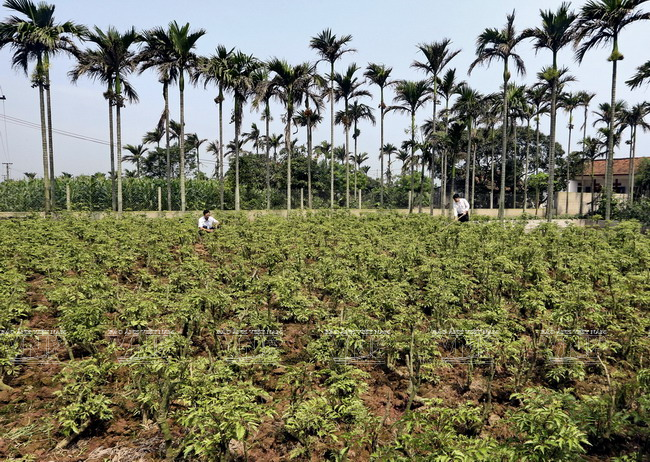
Hai Hau District has 457 hectares of Polyscias fruticosa, mostly in Hai Ha and Hai Quang Communes. Photo: Thong Thien/VNP
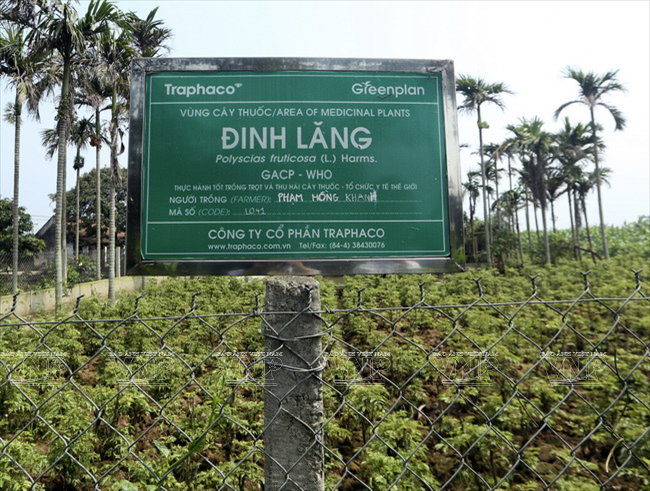
Pham Hong Khanh’s 3-year-old Polyscias fruticosa garden is supported by Traphaco in tersms of seedlings.
Photo: Thong Thien/VNP
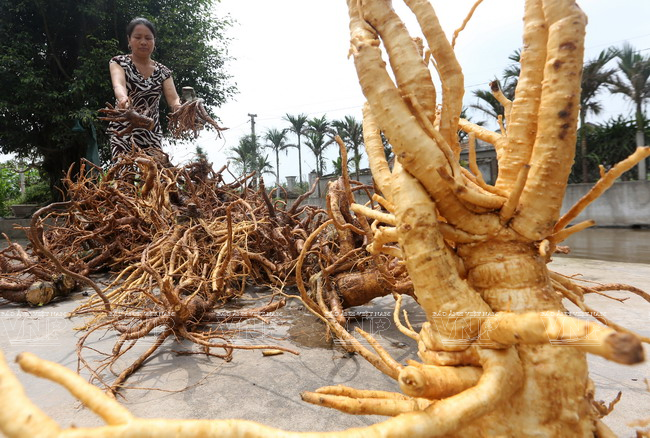
Polyscias fruticosa's roots are cleaned after being harvested.
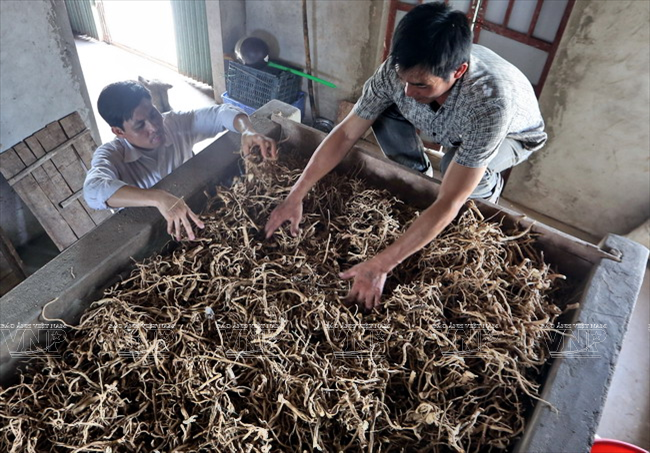
Polyscias fruticosa's roots are dried at Lam Van TInh’s house (Hai Ha Commune, Hai Hau District). Photo: Thong Thien/VNP
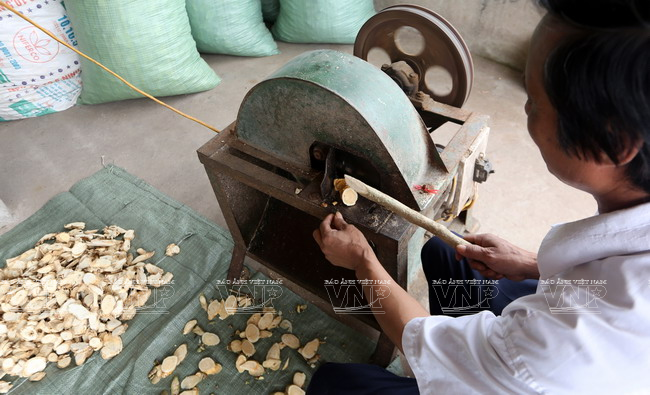
Nguyen Van Thich’s family in Hai Quang Commune pre-processes polyscias fruticosa’s roots.
His family signed contracts on slicing and drying this plant’s roots with 10 households growing polyscias fruticosa.
Photo: Thong Thien/VNP
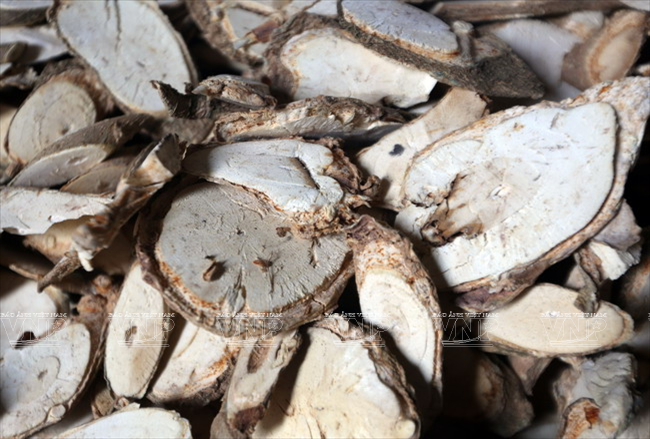
Polyscias fruticosa root slices will be processed into medicine. Photo: Thong Thien/VNP
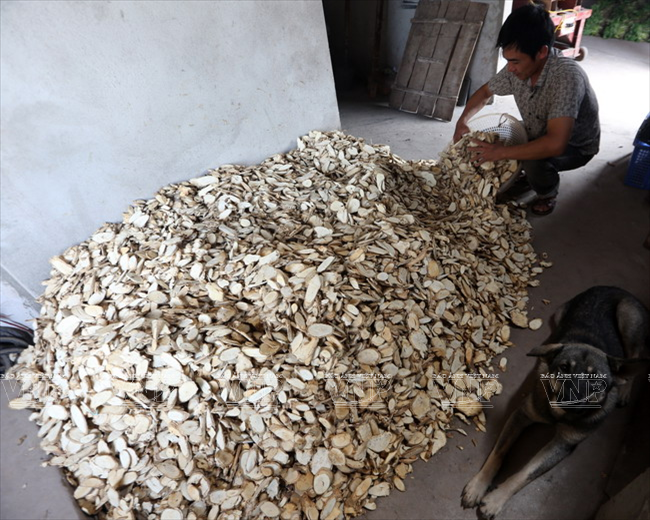
After being dried, Polyscias fruticosa root slices will be carefully stored.
Photo: Thong Thien/VNP
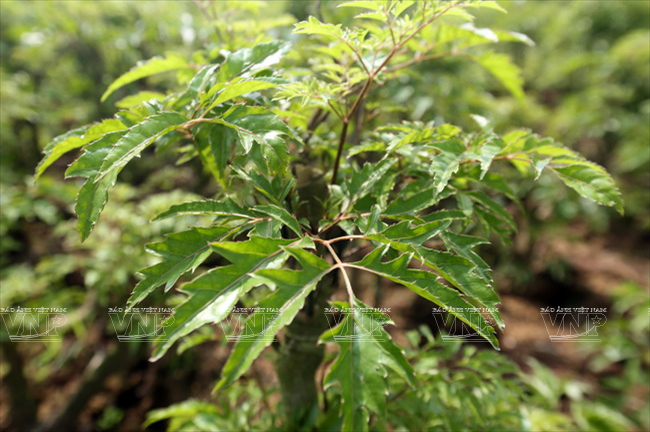
During harvest time, people often use Polyscias fruticosa’s dried leaves
to make beverage or sell to Nem (fermented pork charcuterie) producing workshops. Photo: Thong Thien/VNP |
In recent years the Polyscias fruticosa cultivation areas in Hai Hau District have increased to hundreds of hectares. Growing on fertile alluvial land, Polyscias fruticosa plants in this district are green all year round and have more oil than plants grown in other areas. Now Hai Hau District is one of the two districts in Nam Dinh Province which have been selected by Traphaco Pharmaceutical Company to implement the project: Developing Polyscias fruticosa in accordance with the standards of Good Agricultural and Collection Practice for medicinal plants set out by the World Health Organisation (GACP-WHO).
According to the data by the Statistics Branch of Hai Hau District, the district has 457 hectares of Polyscias fruticosa. Each year, it provides 1,500 – 2,000 tonnes of fresh plants for small traders and Traphaco. There are more than 20 households in the district involved in purchasing and selling these medicinal plants. The purchase price of their roots, stumps, trunks and leaves in the local market is 20,000 – 25,000 VND/kg. The Polyscias fruticosa growers harvest the plants after two years and earn a net profit of 19 – 21 million dong /sao (1 sao = 360m2) a year. These plants are now considered the “green economy” of the locality.
For growing and harvesting Polyscias fruticosa plants in compliance with GACP – WHO, Traphaco has regularly organised training courses to instruct on the cultivation and harvesting techniques for the growers in the district. According to Do Trung Kien, Head of Hai Hau District’s Department of Agriculture and Rural Development, the Polyscias fruticosa cultivation areas constitute a strength, helping renew the face of the rural areas and gradually moving towards building the brand name of Hai Hau Polyscias fruticosa to introduce to the world markets.
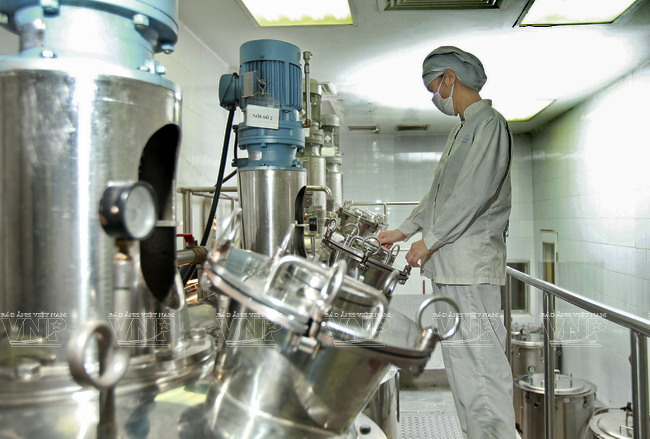
The stage of extracting polyscias fruticosa’s roots in Traphaco. Photo: Thong Thien/VNP
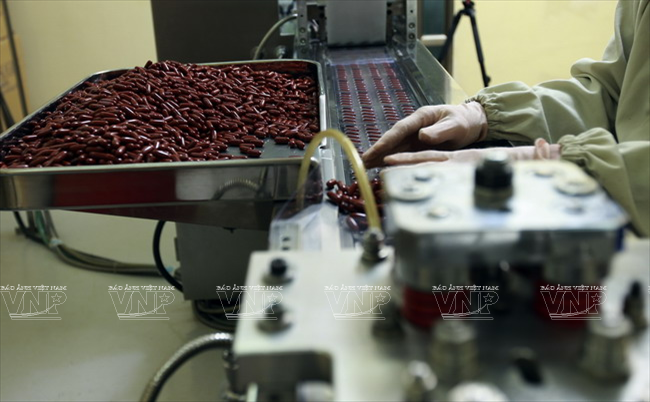
Packing Cebraton capsules made from polyscias fruticosa’s roots. Photo: Thong Thien/VNP
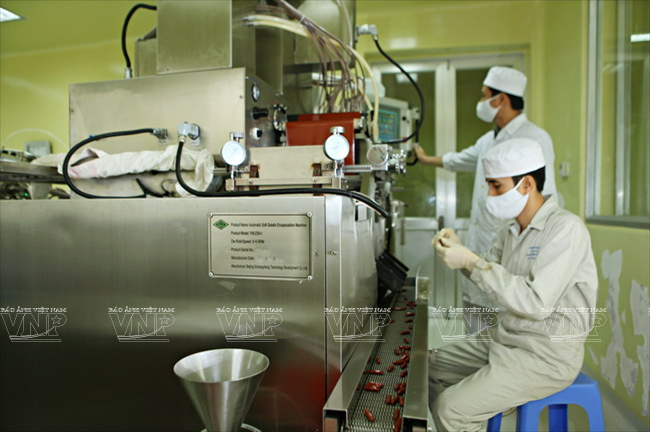
Checking Cebraton capsules’ quality. Photo: Thong Thien/VNP

Thanks to the stable supply of the Polyscias fruticosa materials from the cultivation areas in Hai Hau District, after two years,
Traphaco produced 10 million Cebraton capsules. Photo: Thong Thien/VNP |
Thanks to the stable supply of the Polyscias fruticosa materials from the cultivation areas in Hai Hau District, after two years, Traphaco has produced 10 million Cebraton capsules to provide for the markets at home and abroad. The company has played a central role in connecting the State, the scientists, the farmers and the businesses in the expansion and sustainable development of the medicinal plant cultivation areas, in which the cultivation areas in Hai Hau District is an example.
«
According to many research documents, the roots of Polyscias fruticosa plants are an important remedy to improve health, prevent fatique and increase physical endurance. The leaves have a cooling effect and are useful in the stimulation of blood circulation, treatment of haemoptysis and dysentery and wound healing. The trunk and roots, after being dehydrated, dried in a pan and buried, can be soaked in alcohol or cooked to use as a drink. » |